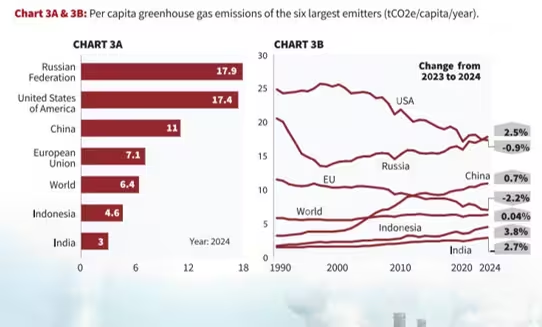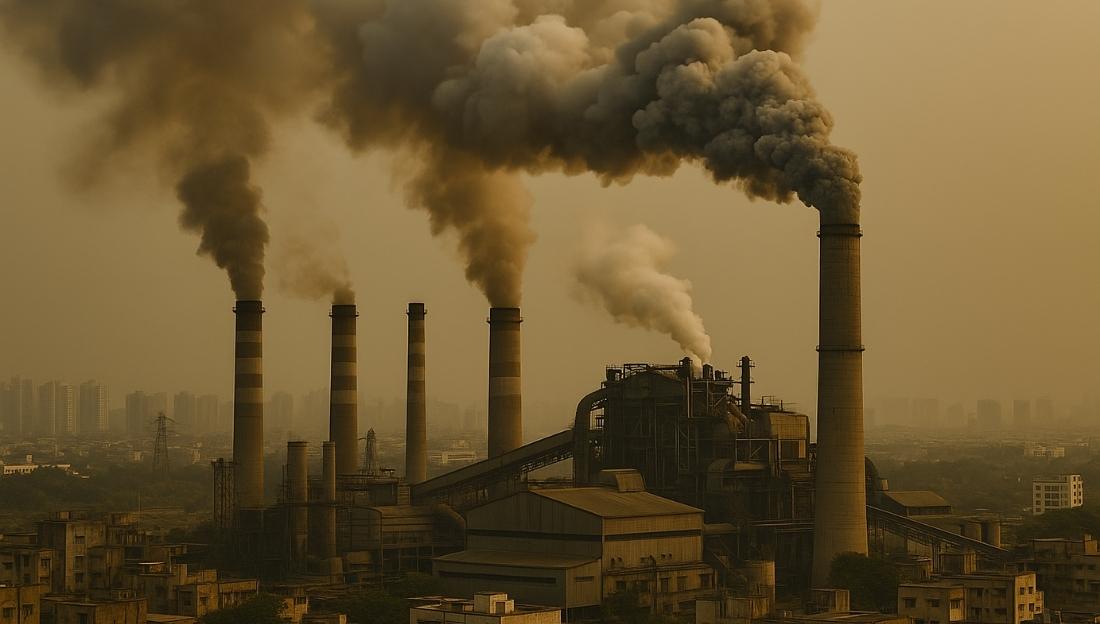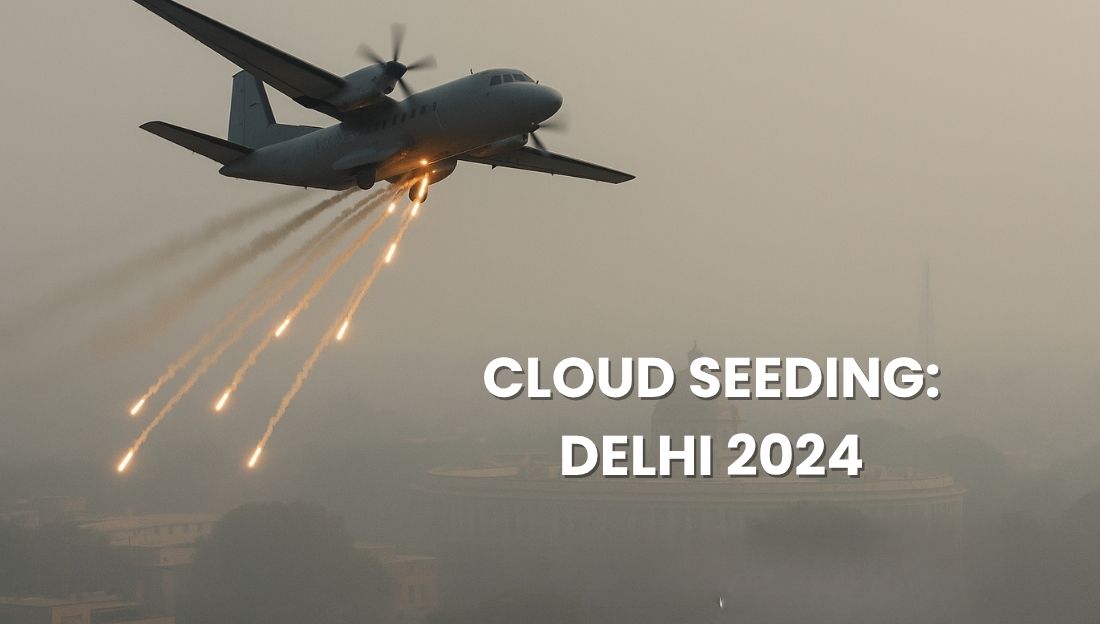The UNEP Emissions Gap Report 2024 (“Off Target”), released ahead of COP30, reveals that India registered the largest increase in greenhouse gas emissions globally in 2024,
About the UNEP Emissions Gap Report
- The Emissions Gap Report is UNEP’s annual flagship assessment, reviewing how far countries are from meeting the Paris Agreement goals of limiting warming to 1.5°C or 2°C.
- It compares national pledges and existing policies with the level of emission cuts needed for climate-safe pathways.
- The document covers major emitting sectors such as energy, industry, agriculture, and land use, and provides global mitigation recommendations.

Highlights of the 2024 “Off Target” Report
- The core warning: The world remains significantly behind the trajectory required to keep warming within 1.5°C.
- Global emissions reached 57.7 GtCO₂e in 2024, marking a 2.3% increase from 2023—the highest level ever.
- Warming projections indicate: 2.8°C by 2100 under current policies. 2.3–2.5°C even if all current NDCs are fully implemented.
- The G20 nations contribute 77% of global emissions, led by China, the U.S., India, the EU, Russia, and Indonesia.
- Only 64 countries, accounting for 63% of global emissions, updated their NDCs by 2024, and most G20 countries are off-track to achieve 2030–2035 goals.
- Sectorally, fossil fuels account for 69% of emissions, methane 16%, while land-use changes continue to be a major driver of additional emissions.
- The report anticipates a temporary breach of the 1.5°C limit by early 2030s if global mitigation does not accelerate.
India-Specific Assessment
- India recorded the largest absolute increase in emissions in 2024, adding 165 MtCO₂e, reflecting a 3.6% growth rate, second only to Indonesia.
- Despite this rise, India’s per-capita emissions remain low at around 3 tCO₂e, less than half the global average of 6.4 tCO₂e.
- India remains the third-largest emitter, after China and the U.S., largely due to its scale, energy needs, and ongoing industrial expansion.
- India’s NDC targets include: 45% reduction in emission intensity by 2030 (from 2005 levels). 50% installed electricity capacity from non-fossil sources by 2030.
- India has already exceeded its emission intensity reduction trajectory but has not yet submitted an updated NDC for the 2025 cycle, which may draw attention during COP30 negotiations.
GREENHOUSE GASES (GHGS)?
Greenhouse gases are gases in the atmosphere that trap heat and keep the Earth warm. They create a “greenhouse effect,” which is natural and necessary for life, but human activities have increased their levels abnormally.
Major GHGs include: Carbon dioxide (CO₂), Methane (CH₄), Nitrous oxide (N₂O), Ozone (O₃), Water vapour, Fluorinated gases (industrial gases)
How Are They Harmful to the Earth?
- Global Warming: Extra GHGs trap too much heat, raising the Earth’s temperature.
- Climate Change: Leads to changing rainfall patterns, more heatwaves, droughts, floods, and stronger cyclones.
- Melting Ice and Rising Seas: Warmer temperatures melt glaciers and polar ice caps, causing sea-level rise.
- Ocean Acidification: High CO₂ dissolves in oceans, harming coral reefs and marine life.
- Biodiversity Loss: Changing climates destroy habitats, threatening plants, animals, and ecosystems.
Conclusion
India’s rising emissions reflect the realities of a developing economy balancing growth with climate responsibility. Ensuring equity while accelerating clean-energy transitions will be central to India’s positioning in upcoming global climate negotiations.
This topic is available in detail on our main website.





